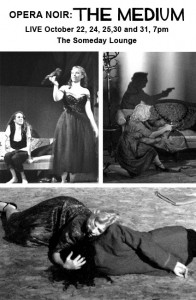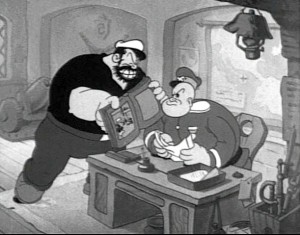 Over at the valuable Portland Architecture blog, which helps keep the city’s designers and planners on their toes, Brian Libby has started a fascinating conversation that’s well worth checking out. It’s about the flap in little upscale Dunthorpe over its school board’s desire to tear down the 1920 Riverdale Grade School and replace it with something fresh and contemporary. Libby and a long string of commenters have created a stimulating conversation on just what historic preservation means — on why it’s important, how old buildings can be transformed for new purposes, when it might be OK to replace a good old building, what a historical presence in architecture means to a community. So far, the consensus seems to be: Keep the building, remodel it for modern needs, make it green, add on if necessary. Well, that’s the consensus on the Portland Architecture blog. It still doesn’t seem to be the consensus on the school board.
Over at the valuable Portland Architecture blog, which helps keep the city’s designers and planners on their toes, Brian Libby has started a fascinating conversation that’s well worth checking out. It’s about the flap in little upscale Dunthorpe over its school board’s desire to tear down the 1920 Riverdale Grade School and replace it with something fresh and contemporary. Libby and a long string of commenters have created a stimulating conversation on just what historic preservation means — on why it’s important, how old buildings can be transformed for new purposes, when it might be OK to replace a good old building, what a historical presence in architecture means to a community. So far, the consensus seems to be: Keep the building, remodel it for modern needs, make it green, add on if necessary. Well, that’s the consensus on the Portland Architecture blog. It still doesn’t seem to be the consensus on the school board.
 Beyond the general interest that Art Scatter has in architecture and planning, I find this conversation interesting because the school was designed by A.E. Doyle, Portland’s most significant architect of the early 20th century, and the subject of a good new historical biography by Philip Niles, Beauty of the City, which I happen to have reviewed for The Oregonian: You can read the review, due for print publication this Sunday, here, on Oregon Live. Central Library, the Benson Hotel (and the Benson Bubblers), the Meier & Frank department store (now Macy’s), the Reed College campus, Multnomah Falls Lodge — Doyle’s stamp is all around the city and its environs, and Niles’ book helps explain both how that came to be and why it’s a good thing.
Beyond the general interest that Art Scatter has in architecture and planning, I find this conversation interesting because the school was designed by A.E. Doyle, Portland’s most significant architect of the early 20th century, and the subject of a good new historical biography by Philip Niles, Beauty of the City, which I happen to have reviewed for The Oregonian: You can read the review, due for print publication this Sunday, here, on Oregon Live. Central Library, the Benson Hotel (and the Benson Bubblers), the Meier & Frank department store (now Macy’s), the Reed College campus, Multnomah Falls Lodge — Doyle’s stamp is all around the city and its environs, and Niles’ book helps explain both how that came to be and why it’s a good thing.
So, save the Riverdale School? My gut says yes, even though I’ve never been inside it, and, frankly, I don’t know in what ways the school board thinks it inadequate. Maybe its members know something none of the rest of us do. But from its pictures it looks like a classic old building, with great light and a simple layout that would seem easy to reconfigure — and even add on to, if necessary. Yes, it might need seismic upgrading, but hundreds of buildings have gone through that: Drive through the little Oregon wine country town of Dundee, on the way to McMinnville, and you’ll see a school that’s been successfully and sensitively earthquake-proofed in the recent past.
I’m aware that a community is a dynamic thing and that preservation, wrongly applied, can be romantic mummification. I can understand the frustration that Le Corbusier and Mies van der Rohe must have felt over the weight of history pressing down on design in Europe, shackling it to the past. But that’s hardly the case in the United States, and especially not in a region as young and still raw-boned as the Pacific Northwest. We’re building all sorts of new stuff (far too much of it, unfortunately, in the sprawling subdivision cookie-cutter style of the rest of the nation) and we don’t have a lot of history to give away.
So weigh in on this thing. Check out Libby’s link at Portland Architecture: It’s a lively example of what can happen at the intersection of design, politics, money and community involvement. And give Niles’ book about Doyle a spin. For anyone interested in how cities grow (and this city in particular), it’s a good read.












